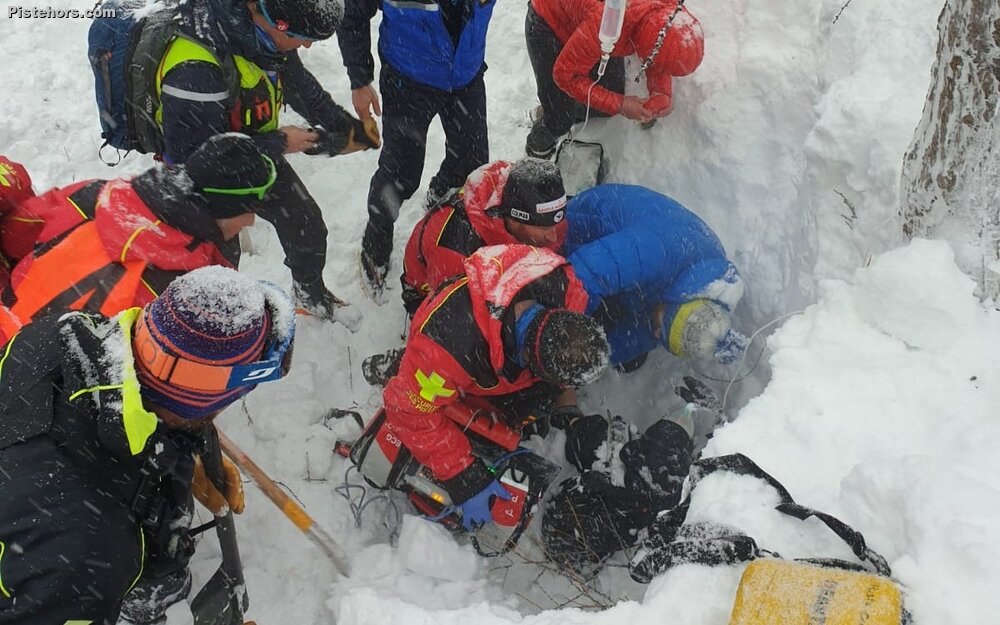Multiple avalanche burials are a subject that preoccupies backcountry travellers with much discussion about the latest avalanche transceivers and how they cope with this problem. Just what is the likelihood that someone will face a multiple burial situation?

We can class multiple burial incidents into two categories. Those where the victims are buried in proximity and therefore require special techniques to separate and locate the overlapping signals and those where the victims are far enough apart that a standard sweep of the avalanche debris will locate the signals in turn. Advanced avalanche beacons use digital signal processing to separate various beacon signals and they can mask an individual signal to help with multiple burials.
To explain this in more detail a modern digital beacon has a range of around 40 to 50 meters but will lock in on the strongest signal. As you sweep the debris you pick up a first signal, provided other victims are sufficiently spaced you will follow this signal to its source. It is only if you detect another, stronger signal, that your beacon will change direction towards this new victim. In this case you may miss the first victim or, after having located the second victim but without having turned their beacon off because they are buried, you may have trouble getting a stable signal to locate the first victim. There are techniques such as the three circles method that can help with the second problem. Add more victims, say within 20 meters or less, and the problem gets even harder.
So what are the chances of facing a multiple victim burial. Fred Jarry of the French Avalance Research Organization analyzed 440 accidents between October 1999 and September 2007. Okay a whole decade has passed since then so the statistics are not totally fresh but give an idea. The data didn't make it possible to separate true multiple burials. In 41% of the incidents there was no or only partial burial, in 47% of cases a single burial. Only 12% were multiple burials and of that figure not all were "true" multiple burials. If we just take data where there is a complete burial then multiple burials rise to 20% overall with 7% involving 3 or more victims.
112 incidents were ski touring, 21% involved multiple burials, this figure rises to 26% for climbing compared to 17% when skiing. Other research confirms that multiple incidents are more common when climbing. Groups have trouble spacing out and have less chance to escape a slide. Of the 135 off piste incidents just 13% were multiple burials. Part of the difference is due to the fact that off piste skiers are nearly twice as likely to be on their own but the risk of a multiple burial is almost twice as frequent for climbing groups.
Ski touring groups therefore have a 1 in 4 chance of facing a multiple burial situation if they trigger an avalanche. However it is important to take into account the number of rescuers left to search and dig. Jarry found average burial depth was 120cm requiring a ton of snow to be moved. To rescue someone within the critical first 15 minutes requires two, trained diggers on the surface. In just 26% of the ski touring incidents analyzed were there enough searchers to mount an effective multiple burial rescue and for off piste skiing, with smaller groups, the figure drops to 17%.
What this means is that in only 6% of the ski touring incidents analyzed were there sufficient resources to mount an effect rescue and this figure drops 2% for off piste skiing. The incidents do involve more victims so should not be ignored but other factors should be primordial:
Further Information
Jarry F. When do we dig? Snow and Avalanches, no 121, April 2008 http://www.anena.org
Genswein, M. and Harvey, S., “Statistical Analyses on Multiple Burial Situations and Search Strategies for Multiple Burials.” ISSW 2002.